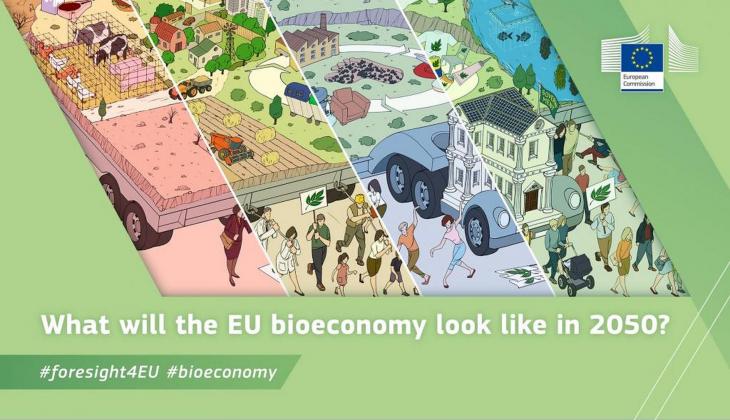The European bioeconomy in 2050: Four foresight scenarios
In collaboration with DG Research and Innovation, the Joint Research Centre has created an ad-hoc network of research experts to contribute forward-looking analyses to the EC’s Knowledge Centre for Bioeconomy. A team of six core experts have built four alternative scenarios for the EU bioeconomy in 2050.
Context
The European Commission’s 2020 Strategic Foresight Report highlights the potential of a sustainable bioeconomy to transform Europe’s agricultural and industrial base and create new jobs, whilst enhancing natural resources and ecosystems.
Vice-President for Interinstitutional Relations and Foresight, Maroš Šefčovič, said: ‘Strategic foresight helps us identify future challenges and ways to prepare for them, by supporting decision-making in an impactful way. Applied to bioeconomy, it is therefore vital, as we live in a world of limited resources. Deploying a sustainable and circular bioeconomy will help us create new bio-based value chains across Europe, while showing that prosperity and the health of our environment can go hand in hand’.
The scenarios
Each scenario below describes the world, Europe, and the bioeconomy in 2050, and to what extent each scenario would contribute to the objectives of the EU Bioeconomy Strategy and to selected United Nations’ Sustainable Development Goals (SDGs):
- 'Do it for us': A consistent and coherent set of policies is designed and implemented to foster radical change in supply systems, but society resists significant changes in demand (consumption).
- 'Do it together': Both the political system and society are aligned to achieve the climate-neutrality goal and the SDGs. Businesses quickly adapt and are part of the change. The transformative process includes all actors.
- 'Do it ourselves': The political system shows an incapacity to implement significant climate and SDG policies. However, consumers change their attitudes and behaviour under the thrust of increasingly influential social movements and the aftermath of a series of dramatic crises. Subsequently, the change in demand (both patterns and levels) drives the supply system to adapt.
- 'Do what is unavoidable': Lifestyles do not change significantly from business as usual (but consumption levels rise), and the political system is not able or supportive to implement proactive policies, limiting itself to adopt – with some delay – measures in reaction to crises.
The Joint Research Centre (JRC) and DG Research and Innovation plan to explore further these scenarios in order to facilitate and strengthen strategic and systemic reflections among key stakeholders of the European Bioeconomy.
Read more here.
